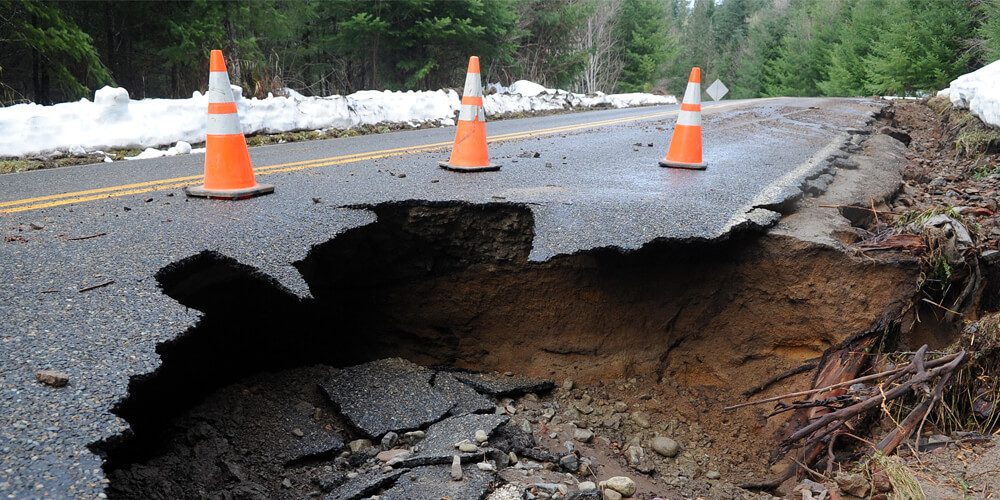
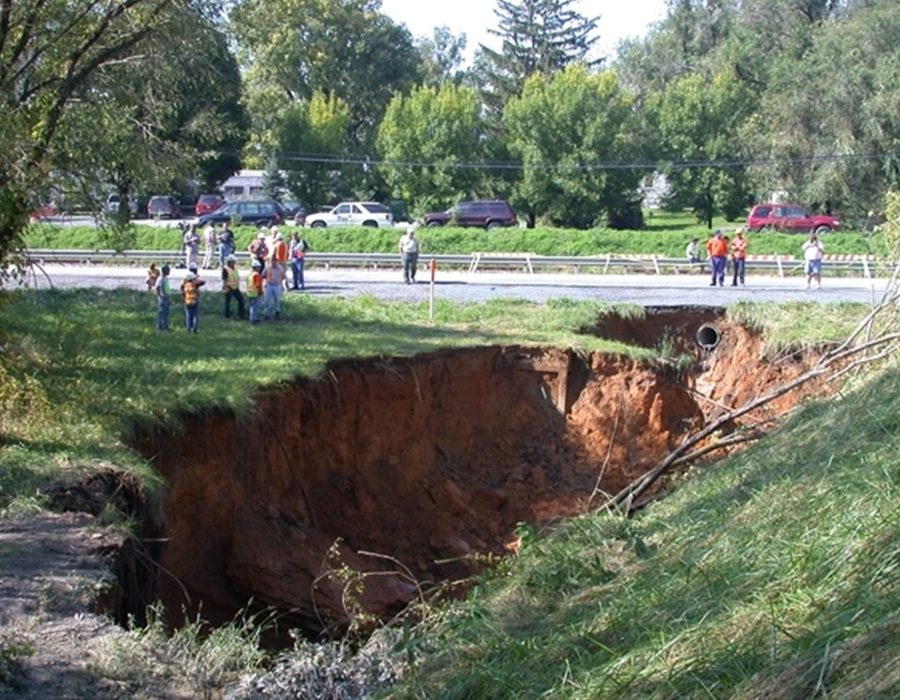
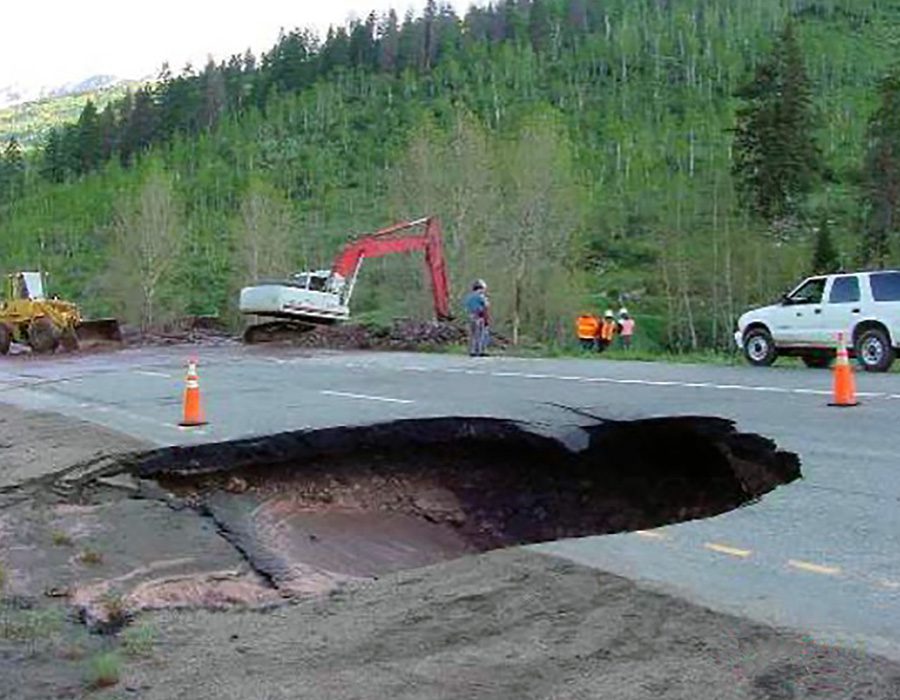



Once a location is discovered and examined, the sinkhole repair method depends on its size, location, geomorphology, and the sinkhole’s cause. In general, a very small and stable hole in an open area can be filled with dirt and restored with ground cover. In the case of a large hole in an open space, excavation is performed down to bedrock, the throat is capped to seal against future water flow, and then a filling operation begins with rock, gravel, dirt, and grout.
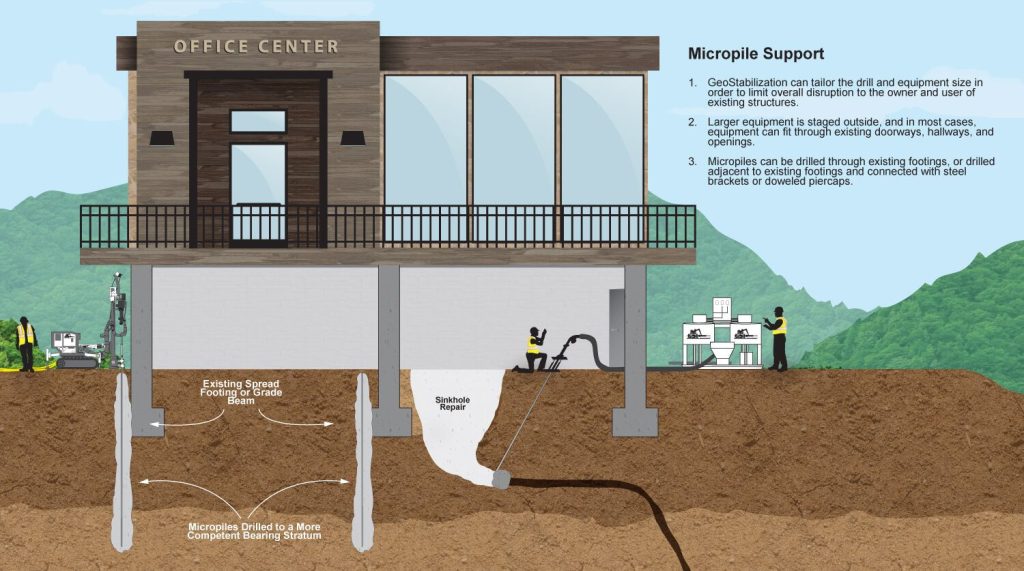
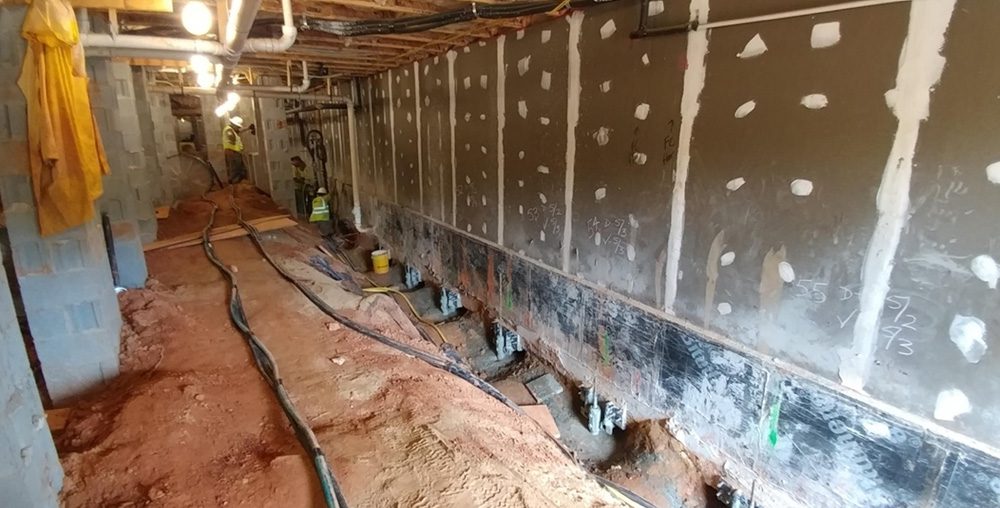
Sinkholes that occur beneath structures pose a complexity as the sinkhole requires remediation, and the building must be stabilized and supported. Once the sinkhole repair is perfomed, compaction or injection grout can be pumped under pressure to fill voids and densify the surrounding soils. Micropiles can also be installed to bedrock and provide bearing support for the structure. In every case, the goal is to create solid support underneath the structure to prevent further issues.
Depressions sometimes develop in utility easements, such as water and sewer lines or stormwater drainage pipes. These situations usually occur when the soil fill over the buried pipes was not correctly placed and compacted. The poorly compacted soil settles over several years, causing a hole or shallow, linear trench on the ground surface. Compaction grouting usually is sufficient to densify the soils and remediate these situations.
If you are interested in a no-obligation site visit to determine if our services fit your needs, call us at 855-579-0536 or fill out our contact form.